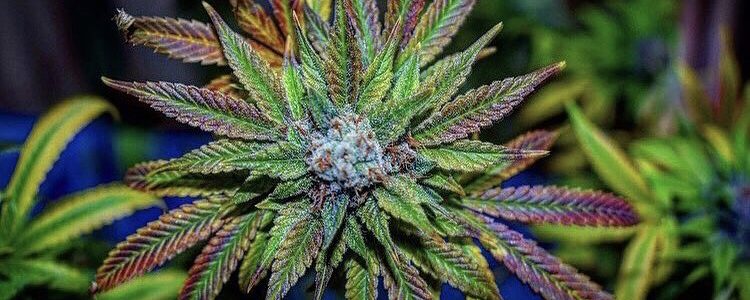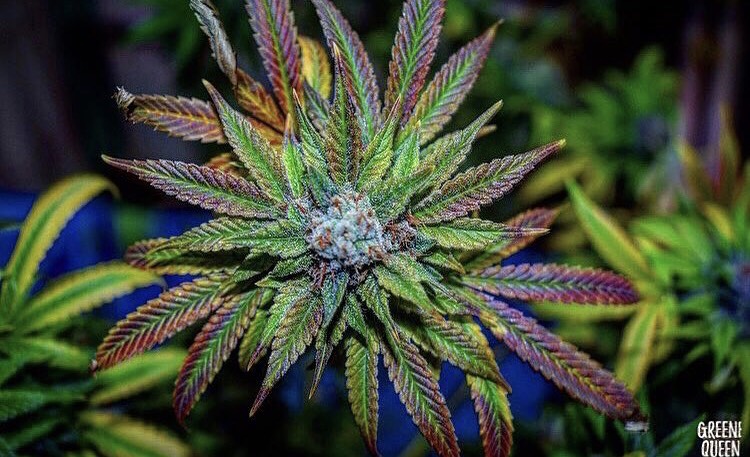April 30, 2019
Cannabis Culture: More Than Just Blowing Smoke

By: burgundy bug
Cannabis plant by Greene Queen
Source: Greene Queen
Oh, stoners. You and your hazy concert venues, passionate nature walks, couch-locked TV binges, forbidden munchies, reggae music, and overwhelmingly naive apathy for conventional responsibility.
Where would we be without you?
A Bit of Context…
Naturally, the culture of cannabis use has evolved alongside history.
What was once the tradition of the ancient Greeks, Egyptians, and Chinese, became a counterculture movement that defined the 20th century.
Read: The History of Cannabis Use
Source: The Burgundy Zine
As more states ease up on the outdated, prehistoric cannabis legislation of the mid-20th century, pushing us closer and closer to abolishing this absurd prohibition, cannabis culture is at risk of undergoing yet another metamorphosis.
20th Century Cannabis Culture
Cannabis had been renowned as a medical miracle for hundreds of years before states began cracking down on the plant in the early 20th century.
By the 1930s, yellow journalism painted the headlines of papers with what was then known as “reefer madness.”
Reefer Madness
“MARIJUANA – THE BURNING WEED WITH ITS ROOTS IN HELL”
Source: Reefer Madness ORIGINAL TRAILER – 1936 (Not the full film) |
Propaganda Time
Reefer madness refers to the cannabis craze that took hold of our nation’s youth. It also refers to the idea that smoking cannabis turned CEOs into slackers and men into murderers
Although use among high schoolers didn’t spike until the late 1970s, according to the book Weed the People by Bruce Barcott, the fear of teens experimenting with the substance stems back over 40 years.
While the fear may have been legitimate, hindsight gives us the inkling that it very well may have been just another fear mongering tactic implemented by the government and the media to propel cannabis into it’s current state of prohibition.
If the government hadn’t caused such a stir over this “illicit substance,” what leg would the Marihuana Tax Act of 1937 have had to stand on?
In Spite of Reefer Madness
In spite of this supposed “reefer madness,” jazz clubs and blues bars found themselves engulfed in clouds of cannabis smoke. Stars such as Billie Holiday and Louis Armstrong were hailed for shaping the culture of cannabis throughout the 1930s.
Muggles by Louis Armstrong
Source: Louis Armstrong – Muggles | TheYellowTelevision
At this time, cannabis culture remained underground, mysterious, and was associated with Mexican migrants and African American musicians.
The government continued to demonize cannabis, thanks to no other than the first commissioner of the U.S. Treasury Department’s Federal Bureau of Narcotics, Harry Anslinger, according to the Drug Enforcement Administration (DEA).
The War on Drugs
Once President Richard Nixon’s war on drugs rolled around in the summer of 1971, a counterculture movement fueled by the “hippies” that used cannabis was born.
“America’s public enemy number one in the United States is drug abuse”
Source: “America’s public enemy n°1 is drug abuse” Nixon” | Courtney Catford
“America’s public enemy number one in the United States is drug abuse,” said Nixon in the White House briefing room on June 17, 1971, according to Encyclopedia.com. “In order to fight and defeat this enemy, it is necessary to wage a new, all-out offensive.”
Nixon’s efforts, however, would do nothing to curtail the use of cannabis throughout the following decade. While legislation toughened up, the number of adults who had tried cannabis in the states jumped from 4-percent in 1969 to 24-percent in 1977, Gallup reports.
Cannabis use was no longer associated with one ethnicity, race, or socioeconomic class. It now belonged to the hippies in the eye of DEA agents and law enforcement officials.
Hippies
There were 200,000 full-time hippies throughout the 1960s, research published in the book The Hippie Trip by Lewis Yablonsky found. Yablonsky also estimated there were an additional 200,000 “part-time hippies.”
Culturally, hippies were mellow, vibrant, college-aged students with their fringe jackets on the fray and their bell-bottom jeans as wide as the day is long, as published by Trans Stellar in a research article.
Politically, this group was defined by their vehement opposition of the Vietnam War and valued the ground beneath our feet. Hippies also looked to alternative forms of medicine such as holistic treatments, lysergic acid diethylamide (LSD), and cannabis, according to Encyclopedia Britannica.
Without a doubt, Woodstock is at the very cornerstone of these counterculturalist.
The festival began in Bethel, NY on the lukewarm, somewhat rainy afternoon of Aug 15th, 1969. In just three days, Woodstock saw roughly 400,000 guests, as reported in an article published by the Spokane Daily Chronicle on Aug 18, 1969.
“Notwithstanding their personality, their dress, and their ideas, they were and they are the most courteous, considerate, and well-behaved I have ever been in contact with in my 24 years of police work”
Lou Yank (Spokane Daily Chronicle Aug 18, 1969)
Sex, drugs, and rock and roll ran rampant at Woodstock. Although only 80 people were arrested on drug charges, cannabis remained ever present throughout the weekend.
Legendary artists performed, including: Santana, Grateful Dead, Janis Joplin, The Who, Jimi Hendrix, as well as Crosby, Stills, Nash, & Young.
The impact of Woodstock and hippies as a movement is still present today in our music, fashion – and naturally, the current culture of cannabis use.
Hippies also advocated for marijuana reform and fought the Vietnam war through protests, particularly in the San Francisco Bay Area, according to research published by Routledge.
Alongside researchers, such as the Shafer Commission, using their expertise to prove the war on drugs was unjust, hippies helped pave the way for a new and much needed perspective on cannabis.
From Woodstock onwards, it was now “rock ‘n roll” to roll a spliff and get rocked. It was no longer just a staple of jazz music: it was the symbol for an entire movement.
21st Century Cannabis Culture
By the early 2000s, organizations such as the National Organization for the Reform of Marijuana Laws (NORML) began gaining traction and states began taking a step back from their unforgiving legislation.
Although cannabis decriminalization began with Oregon in 1973, it would take until 1996 for medicinal cannabis to be written into law, according to NORML.
As luck should have it, one of the first states to outlaw cannabis in the early 20th century was the first to legalize it’s medicinal use just before the 21st century.
That state was California.
Over the last two decades, researchers, legislators, medical marijuana companies and patients have pushed for cannabis reform with some tremendous results.
While the recreational use of cannabis is legal in 10 states, the medical use legal in 33, according to ProCon, we still have a ways to go before we see nationwide legalization.
Update: For an interactive timeline of cannabis legalization throughout the United States, click here.
However, cannabis culture has been the victim of stereotypes attributed by public service announcements (PSA), local police enforcement, public schools, and family, even throughout this 20 year period of reform.
Above the Influence advertisement
Source: Melting Into The Couch | IAmHighRightNow
Historically, cannabis users have been deemed “criminal,” “greasy,” “bums.” While some of these alleged “stoners” find a certain level of humor in the absurdity of these labels, it has driven others to keep their use behind closed doors in fear of being shamed, according to a research article published in Visual Communication.
“One of the stereotypes that frustrate me most about those who use cannabis is that we have no work ethic,” said an anonymous cannabis user during our interview Why Do You Use Cannabis? on Sunday. “I have a full-time job. I work everyday. Cannabis has never crossed lines or messed up my ability to work.”
Cannabis culture is still associated with smokey concert venues, tie-dye tees, flower crowns, unkempt beards, long-hair, love, oversized joints, and Rastafarian colors, the research article reports.
Yet, there is another side to modern day cannabis culture: the medicinal side.
While medical marijuana patients do not exclude young adults with long hair, sporting shades of red, yellow, and green, it includes an entirely different demographic.
This demographic consists of folks old, young, and in the middle. Mothers, fathers, aunts, uncles, sisters, and brothers. Doctors, lawyers, celebrities, athletes, the average Joe, and the unemployed. Those suffering from both psychological and physiological disorders.
ProCon estimated there were 2,132,777 medical marijuana patients as of May 2018.
Certainly all of these “pot heads” couldn’t be the “greasy, criminal bums” society so desperately wants them to be.
Medical marijuana dispensaries are also not the hazy smoke shops run by liberal college students that you would come to expect.
They are highly secure, rigidly regulated, and devoted to the medicinal powers possessed by pot, as we learned during Herbology’s Town Hall in Morton, Pa earlier this month.
As a new wave of cannabis users crashes over the United States, the culture of cannabis use may undergo yet another metamorphosis. From the medical miracle predating the 20th century, to the gateway drug of the last 100 years, the devil’s lettuce may finally regain its title as a medical miracle.
With our medical marijuana cards handy in the front flaps of our wallets, maybe us cannabis users will finally be heard over the whitenoise of outdated stereotypes and propaganda.
Cannabis plant by Greene Queen
Source: Greene Queen
Interested in having content featured in an upcoming blog post or issue of The Burgundy Zine? Head on over to the submissions page!
For all other inquiries, please fulfill a contact form.



